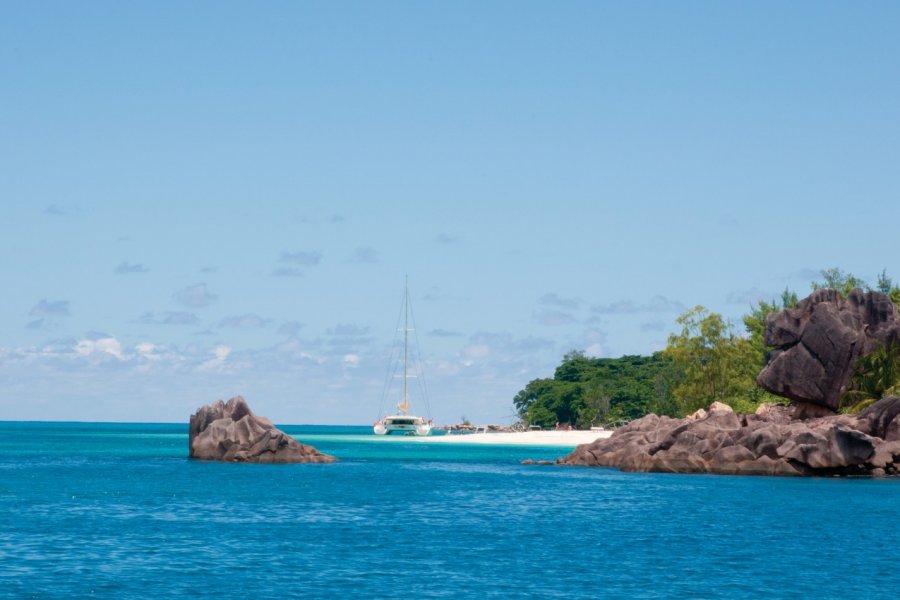Travel Guide Curieuse
Find an accommodation
Advertising
Discovered in 1744 by Lazare Picault, Curieuse took the name of the schooner commanded by Lampérière in 1868, under the command of Marion Dufresne. Spreading over about 3.5 km long and 1.5 km wide, it is barely 1 km from Anse Boudin, north of Praslin. It is not very high, since its highest point reaches only 172 m, but it has a rugged relief and seems impenetrable. A generous vegetation covers it: mango trees, banana trees, orange trees, jackfruit trees, ox hearts, and even sea coconut trees! But of the important colony of yesteryear, which covered almost the whole island, only a few stumps remain. So 420 feet of cocos de mer were planted in 1998, in the hope of seeing the rebirth of a coconut grove as beautiful as the one that was accidentally burned in 1771 by sailors from a British corvette. A few coconut trees have survived here and there. Curieuse, although amputated of its invaluable forest of former days, does not remain less attractive. Its enormous takamakas (surely the biggest of the archipelago) shade a coastline whose coves serve as natural harbors for sailors. Turtles have replaced lepers on this land. A camp had indeed been opened there in 1833, to house a hundred lepers from Mauritius. They were soon transferred to the islands of Ronde and Praslin for the men, and Mahé for the women, worrying at the same time the Praslinois and Mahélois, who feared that this dangerous neighborhood would spread the disease to their islands. Also, under the persistent pressure of the population, the authorities reopened the leper colony of Curieuse in 1938, the last lepers having been transferred to Mahé, at Anse Boileau, only in 1965. Today, all that remains from that time are burnt houses and a large uninhabited colonial house, once reserved for Dr. Mac Gregor, the doctor of Praslin who came there regularly. This atmospheric house, where a scene from Goodbye Emmanuelle was shot, has been restored and converted into an education and information center. The latter, financed by France, was inaugurated in 1996. Only one family, the Suzettes, live on the island and are in charge of maintaining the park, where very young sea turtles live protected from predators (cats, rats and crabs) behind a long stone dike. The keeper watches over the eggs that the females lay in May and June in the sand where they must remain for two months before hatching. Only then will the newborns be carried into the saving enclosure. About a hundred giant tortoises, the oldest of which is a century old, live in semi-liberty on this island where some 30,000 visitors a year come to stay on the tourist trail. This pleasant official path leads to the doctor's house through a strange terrain plowed by huge crabs, and through a mangrove rich with six varieties of mangroves. The island is also known for its remarkable granite formations, at the mouth of the very photogenic Laraie Bay. All these sights do not really justify the SR 300 fee (including access to the islet of Saint-Pierre) that every visitor must pay to wander around the island of lepers, this excursion of a few hours being on the program of several hotels and excursionists of Praslin.
Suggested addresses Curieuse
Weather at the moment
Advertising
Organize your trip with our partners Curieuse
Transportation
Book your plane tickets
Car Rental
Boat rental
Accommodation & stays
Find a hotel
Holiday rental
Find your campsite
Tailor-made trip
Immersion travel
Services / On site
Activities & visits
Find a doctor
Find unique Stay Offers with our Partners
Pictures and images Curieuse
Other destinations nearby Curieuse
5 km away
25 km away




